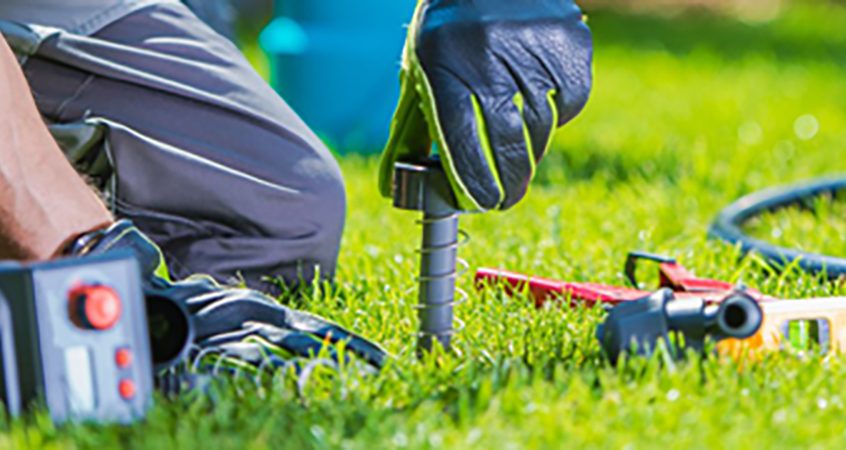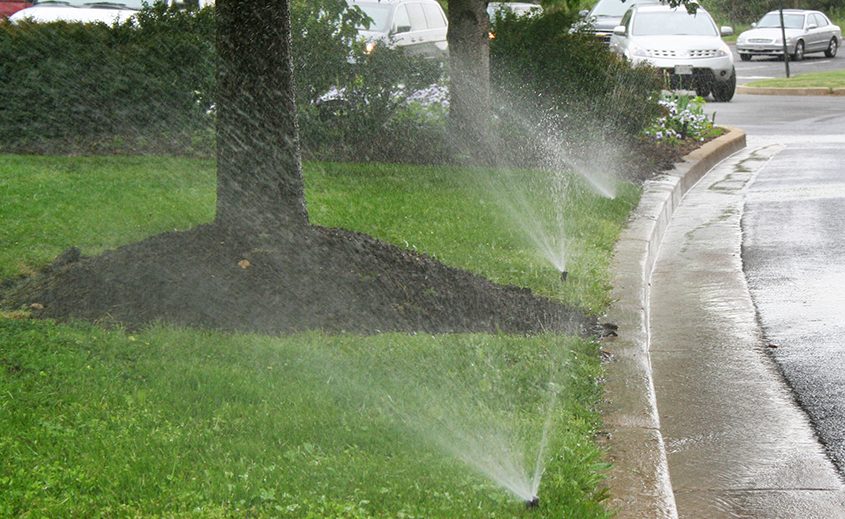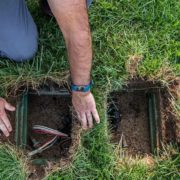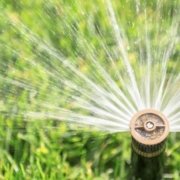Spruce Up Your Sprinklers in April
Californians gave their irrigation systems the winter off in much of 2023 thanks to above-average precipitation. As the weather warms, the U.S. EPA encourages everyone to perform a maintenance check in April as part of its “Sprinkler Spruce Up” effort.
A sprinkler spruce-up involves four steps: inspect, connect, direct, and select. Cracks in pipes can lead to costly leaks, and broken sprinkler heads can waste water and money. System maintenance can help save money and water, up to 25,000 gallons of water, and $280 over a six-month irrigation season. April is an ideal time to spruce up your irrigation system.
Look for leaks and breaks
Because most irrigation systems run in the early morning, missing or broken sprinkler heads may go unnoticed. This can cause overflow or flooding on landscapes or waste water on hard surfaces.
Inspect your irrigation system and look for sprinkler heads that do not pop up fully or are tilted. Flag them so they can be located and repaired later. You may be able to do it yourself but call on a WaterSense-certified professional who can replace the broken sprinkler heads.

Check all connections
Leaks can occur at the joints between sprinklers and the piping. Leaking joints can also be caused by too much water pressure or particles in the water. Check to ensure your pressure regulator is installed properly.
Between irrigation cycles, look for water pooling on the surface of your landscaping. This could be caused by an underground leak. Check the connections inside valve boxes to make sure all the valves and other components are securely connected. If the valves cannot close completely, your system could slowly seep water even when turned off.
Survey your irrigation coverage

Irrigation water spraying on hardscapes instead of landscape plants is wasted down the stormwater drain. While your system is running, note any overspray and adjust sprinklers toward your landscaping.
For best results:
- Each sprinkler should be able to reach the sprinkler head next to it, called head-to-head coverage.
- Direct sprinklers for uniform coverage to avoid dry spots.
- Maintain consistent water pressure so that nozzles can operate efficiently.
- Upgrade to a smart controller. Weather and soil moisture-based controllers can automatically adjust your watering schedule.
The greatest waste of water in landscape irrigation comes from watering too much, too fast. Observe how water absorbs into the ground during the watering cycle. If water begins running off your landscaping or pooling, run sprinklers in multiple shorter sessions with breaks. This allows water to soak into the soil and minimizes runoff.
Instructions to help homeowners check in-ground irrigation ground systems here: “It’s Time to Start a Sprinkler Spruce-Up!” The EPA’s checklist “Find It, Flag It, Fix It: A Checklist For Your Landscape” shows how to walk through your landscape to identify problems. The checklist also provides additional irrigation and landscape tips and suggestions about when to call in an irrigation professional.




